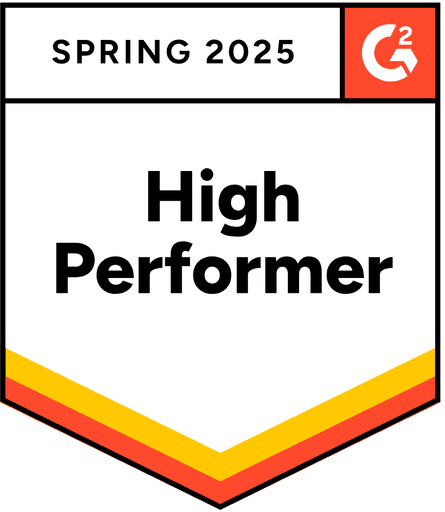Public Roadmap Best Practices, Examples and Templates

Public product roadmaps are a powerful way for companies to increase transparency and build trust with their customers. By sharing upcoming product releases and plans, companies invite valuable feedback and foster stronger customer engagement.
Today’s users are more informed and expect transparency from the tools they use. Having a public product roadmap demonstrates honesty, accountability, and a clear vision for the future.
In this article, we’ll explore some of the best public product roadmap examples, share key takeaways to help you improve your own roadmap, and highlight best practices for building an effective and transparent roadmap. Let’s dive in!
What is a Public Product Roadmap?
What is a Public Product Roadmap?
A public product roadmap is a single source of truth shared with everyone. It outlines your product’s direction, vision, priorities, and progress—giving customers a clear view of upcoming features and ideas. Customers stay up to date and are notified about their requests and your plans, eliminating the need to ask, “What’s going on with this feature?” or “When will it be released?”
Looking for a public product roadmap tool? Check out Ducalis.io and Sign up now.
Why You Need a Public Product Roadmap
A public product roadmap is a powerful communication tool that outlines the future direction of your product. It helps teams and stakeholders stay aligned and make informed decisions.
Here’s how a public product roadmap adds value:
Clearly shows what’s been completed and what’s coming next
Increases transparency and builds trust with users
Opens the door for customer feedback and engagement
Supports better decision-making for internal teams and external stakeholders
Builds interest and engagement among potential customers exploring specific features
Whether you're launching new features or improving existing ones, a public roadmap keeps everyone informed and invested in your product’s success.
Key Elements of a Successful Public Product Roadmap
When creating a public roadmap, it's important to balance design, usability, and communication to make it effective for both customers and internal teams. Whether you're using a free roadmap tool or a custom solution, here are the key elements to focus on:
Simple Design: A public roadmap should have a clean, visually appealing layout that’s easy to read. Too much or too little detail can overwhelm or confuse stakeholders. Clarity is key.
User Experience: Design your roadmap so customers can quickly understand what’s planned and what’s in progress. A good public roadmap combines valuable information with an intuitive, engaging interface.
Basic Information: Share a high-level overview of key features, customer feedback, and priorities. This gives users insight into your product’s direction and builds anticipation without overwhelming them.
Easy Navigation: Users should be able to easily find their submitted feedback or filter to view feedback related to any part of your service.
Categorized Roadmaps: Create separate roadmaps for different workflows—such as one for bugs, another for feature requests, or separate roadmaps for different language segments.
Define Visibility: Decide who can view your roadmap—whether it's all users, specific segments, or just internal teams.
Discussion Opportunities: Allow users, stakeholders, and teammates to share opinions on features by enabling comments and reactions.
Easy Access: Make your roadmap easily accessible by embedding it into your site or displaying it as a widget.
Regular Updates: Review your roadmap regularly, update statuses to reflect progress, adjust plans as needed, and notify users of any changes.
Ready to create your own roadmap?
Get started for free with Ducalis Roadmap.
Need inspiration?
Check out our curated collection of top roadmap examples to see how some companies use public roadmaps—and consider trying a free Ducalis roadmap tool to get started.
Public Product Roadmap Examples
GitHub's Public Roadmap: A Transparent Look Into Upcoming Features
What Works Well: GitHub’s public product roadmap offers a clear view of the features currently in development, organized by quarter, status, and estimated release timelines. It’s a strong example of how a public roadmap can keep users informed and engaged.
The roadmap is hosted in a dedicated GitHub repository, designed specifically to communicate product updates. The focus is on visibility rather than discussion—making it a clean, informative reference with clearly labeled items.
Each feature is organized on a project board and grouped by its expected release quarter. This structure gives users a high-level timeline of what's coming, making it one of the most straightforward and effective public roadmap examples available.

What Could Be Improved: However, because existing issues are read-only and conversations are locked, the roadmap limits two-way communication. While it successfully provides visibility into upcoming features, this public roadmap example reveals a key drawback—without interactive elements, users can't engage, ask questions, or provide direct feedback.
Additionally, the language used is fairly technical and doesn’t always communicate the reasoning or value behind upcoming features, making it less accessible for non-technical audiences.

Tip: Integrate GitHub with Ducalis to automatically generate public roadmaps, release notes, and changelogs—saving time and improving transparency.
Loom’s Public Roadmap: Giving Users a Voice in Product Development
What Works Well: Loom, a popular video messaging tool, helps users communicate through instantly shareable videos. To stay transparent and user-focused, Loom created a public roadmap that highlights what they’re building next, rather than the entire development process.
This public roadmap example allows customers to explore upcoming features and upvote the ideas they care about most—directly influencing Loom’s priorities. It is also divided into product sections, such as Records, Sharing, etc., allowing users to easily find the features they’re most interested in.

What Could Be Improved: There’s no option to subscribe without submitting feedback. Users also can’t comment or react—they can only vote.
A more granular level of detail on release dates could be helpful, but overall, this is a solid example of a public roadmap.

Ducalis Public Roadmap: Showing the Full Development Process to Involve Users and Keep Them Engaged
If you’re a Ducalis customer, you probably know we offer public roadmap functionality. You can check our main roadmap here. We also have several roadmaps divided by product areas.
We suggest keeping the roadmap fairly detailed by using segments such as “Inbox,” “For Prioritization,” “Prioritized,” “Top Priority,” “In Progress,” “Done,” and “Postponed.” This structure gives users better visibility into the process and reduces the number of questions about feedback stages and statuses. We also provide the opportunity to vote, comment, and react—showing customers that their opinions matter and involving them in our plans.
We also identify users to trigger what we call a feedback loop—this helps channel additional input and keeps users informed about the status of specific features they’re interested in.

Buffer Maintains a dynamic roadmap
What Works Well: Buffer’s public roadmap features a simple, easy-to-read Kanban view that clearly shows upcoming features, bug fixes, and improvements. It includes a voting and comments system, allowing users to vote on features they want to see in the future. Users are also notified when a feature moves from “Planned” to “In Progress” to “Complete,” keeping them informed throughout the process.

What Could Be Improved: With numerous columns and tags, some users may find the roadmap difficult to navigate and overwhelming at times.
Using and Updating the Roadmap
It’s important to take any learnings or insights, feed them back into your team’s discovery process, and ensure the product roadmap reflects both current work and long-term goals.
The roadmap should be updated as often as necessary to remain an accurate source of truth.
If it's not kept up to date, stakeholders may start reaching out directly for updates instead of consulting the roadmap. These one-off requests reflect a lack of trust in your roadmap—and can become a significant drain on your time.
You shouldn’t have to waste time constantly updating your roadmap just to keep everyone aligned. A public roadmap is meant to help you focus on building great products—not become a task that takes time away from actual execution.
Instead of updating everything manually, you can automate your roadmap with Ducalis. It pulls in feedback, priorities, and data automatically, updates statuses from your task tracker, and even writes announcements—so your roadmap stays up to date with minimal effort. This way, your team stays focused, and stakeholders always have access to the latest plans.
How to Build Your Own Public Roadmap?
Building a public product roadmap is an effective way to communicate the strategic direction of your product to your audience. Here's a step-by-step guide to help you.
Conclusion
A public product roadmap is a powerful tool for keeping your team aligned and your users informed. It not only supports internal planning but also creates transparency and trust with your customer base.
More and more companies are now showcasing public roadmaps on their websites to openly communicate product direction and progress. By doing so, they keep stakeholders in the loop and encourage meaningful engagement from their user community.



















